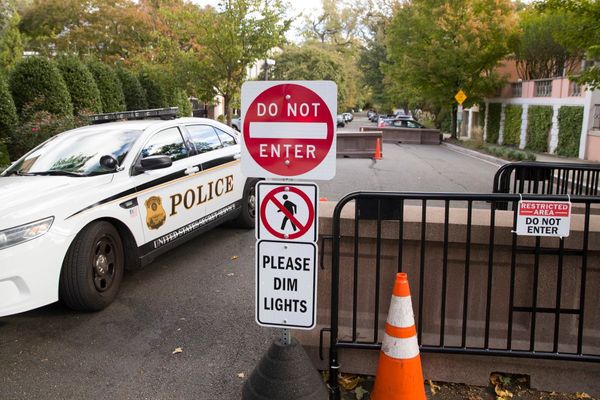
A New South Wales government program that gives police discretion to divert people found with small quantities of illicit drugs away from the courts has only been extended to 6.9% of people caught, including just 2.6% of those who are Indigenous.
The major reform by the Minns government came into effect in February this year and was flagged by the attorney general, Michael Daley, as a way to treat drug use as a health issue rather than a criminal one. Yet data obtained from NSW police under freedom of information shows the vast majority of those caught with illegal drugs continue to be criminalised.
Ahead of the state government’s two-day drug summit starting on Wednesday, advocates are calling for the government to decriminalise personal use quantities of illicit drugs. Failing that, they argue the decision to divert those caught with the substances away from courts should not be left up to police.
The diversion program, known as the Early Drug Diversion Initiative, gives police the option to allow someone caught with small amounts of illegal drugs to pay an on-the-spot $400 fine or speak to a health professional over the phone instead of going to court.
The data showed 1,749 Indigenous people who were eligible for diversion were instead charged. Meanwhile, the data – which covers the eight months after the laws came into effect in February – showed only 46 Indigenous people received diversions.
It also showed Indigenous people were 4.5 times more likely to be charged by police with a small-scale use and possession offence than non-Indigenous people, according to analysis of the data by Unharm, which obtained the data from police.
However, diversion also remained low among non-Indigenous people, with just 7.8% – or 617 people – diverted while 7,269 had been criminally charged.
The data also showed that people caught with MDMA or cocaine were most likely to receive a diversion, with 29% and almost 23% respectively caught and not charged.
“What the data seems to indicate is there is a leniency for offences where generally the drugs are often used by people in higher income,” said Prof Larissa Behrendt, a law expert at the University of Technology Sydney.
Behrendt said the data showed that “we are seeing more vigorous policing for First Nations people around minor drug offences” and that it goes to the heart of why a different response is needed.
“Decriminalisation should be the goal,” she said. “[We] need greater investment in community-driven, community-based and community-led solutions around drug addiction and the need to be conceptualising it as a health problem, not a basis for criminality.”
Advocates say decriminalisation would mean people found to be in possession of small quantities of drugs for personal use are not prosecuted no matter how many times they are caught, and are instead referred to a “properly designed” health intervention.
Karly Warner, Aboriginal Legal Service chief executive, said “in a context where NSW is imprisoning record-high numbers of Aboriginal people, addressing this disparity must be a priority for government”.
“We continue to call for implementation of the recommendations of the ice inquiry in full, including decriminalisation of possession and use of small quantities of all drugs.”
The diversion program was introduced after it was recommended in the 2019 special commission of inquiry into the drug ice. But the person who put forward that recommendation and presided over the inquiry, Dan Howard SC, told Guardian Australia it had not been implemented in the way that he recommended. He was calling for the diversion system to be redesigned.
“We recommended that the diversion should be a matter of law that a person be diverted and that it not be left to police discretion,” he said.
“I have huge respect for the police, but this is not an issue that should be left to the individual constable on the beat.
“There are some local area commands that haven’t diverted anybody.”
According to the NSW police data obtained under freedom of information, five area police commands had not diverted anybody away from the courts as of the end of October.
The area commands were Ryde, Riverstone, the Hills, Manning Great Lakes and Port Stephens. Collectively they charged 483 people and diverted none.
A punitive approach was taken by a vast number of other police area commands, with many only diverting one or two people. This included Blacktown police area command where just two people had been diverted and 212 people had been charged. Seven police area commands collectively charged 483 people.
The Auburn police area command diverted the most people caught with drugs, with 36%, or 109 people, diverted, while 464 people were charged. Sydney city police area command had the second highest, with 29%, or 136 people, diverted, while 464 people were charged.
Howard said creating a diversion program was his “fallback” option in the inquiry. What he also recommended, and continued to advocate for, was decriminalisation.
“We’re criminalising what is really a health problem for people who simply use or possess illicit drugs,” he said. “[Treating people] as criminals is so terribly stigmatising, and it creates so many more problems than it solves.”







